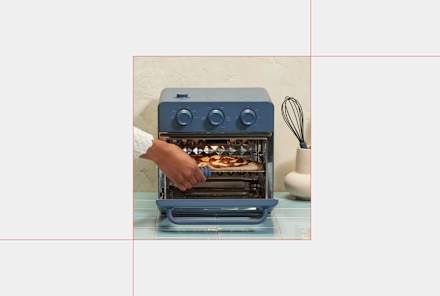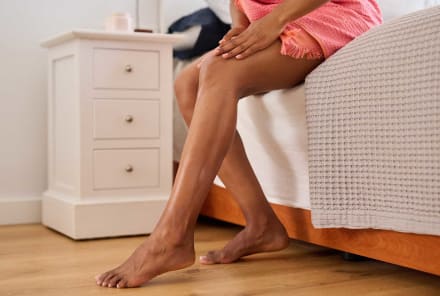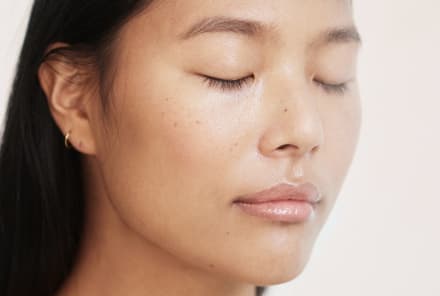Advertisement
Sick Building Syndrome: What It Is & How To Protect Your Space


Over the past two decades, the prevalence of chronic disease in the United States has grown by a steady 7 to 8 million1 people every five years. Today, chronic disease affects 50% of the population, and its care consumes more than 85% of health care costs. This situation has truly become an epidemic. But how is this possible if we have better access to food, water, and medical technology than ever before?
One factor behind this health epidemic can be found in our indoor environments—here's what to know about the phenomenon of "sick building syndrome."
What is sick building syndrome?
According to the EPA2, sick building syndrome (SBS) is a condition in which people develop symptoms of illness or become infected with chronic disease as a result of exposure to contaminants and poor indoor air quality in buildings. These environments can include our homes, workplaces, schools, and more. Basically, anywhere that we spend a lot of time.
SBS can develop in a variety of ways as there are a multitude of possible contaminants. Some of the most common causes are3:
- Chemical contaminants, such as VOCs, radon, formaldehyde, asbestos, dust, and lead paint
- Biological contaminants, such as pollen, bacteria, viruses, fungus, and mold
- Inadequate ventilation
- Electromagnetic radiation
- Poor and inappropriate lighting combined with the absence of sunlight
- Bad acoustics
- Poor ergonomics
- Humidity
In the 1970s, when Richard Nixon was president, we were dealing with an energy crisis, leading to the energy efficiency revolution. Since then, homes have been built tighter and tighter. This means less airflow between indoor and outdoor environments, resulting in less dilution of the air and more contaminants trapped inside. With every breath we take, those contaminants continue to enter our bodies and build up.
Exposure to this toxicity level over time can trigger a long list of potential chronic illnesses. We still don't yet know the full extent to which SBS affects health.
Signs of sick building syndrome
Unfortunately, the lack of awareness and consideration for SBS has led to an increasing number of individuals affected. Oftentimes, they have no idea that their indoor environments are what's contributing to their chronic health issues. This has to change.
It will take a collaborative effort to address this worldwide health problem, and it won't happen overnight. That's why awareness is so crucial. The more you know about SBS, the greater your chances of avoiding unwanted exposures.
Knowing what to look out for can help us pinpoint if our indoor environment is triggering our bodies to sound the alarm that something is amiss. Here are a few signs you could be dealing with SBS:
Chronic symptoms with no explanation
Chronic symptoms with seemingly no underlying cause can be a sign of SBS. Some of the common symptoms include irritation of the eyes, nose, or throat; dry cough; itchy skin; fatigue; reduced memory or concentration; brain fog; headache; dizziness; nausea; and sensitivity to taste.
Unfortunately, many medical professionals don't necessarily consider environmental exposures, so these chronic symptoms can be tricky to assign a root cause. Symptoms can also vary widely from person to person. Various factors play a role, including the types of contaminants present, the volume of contamination, genetics, and immune system health.
If several individuals within a household or office are experiencing chronic symptoms, even if they're not identical, this can point to sick building syndrome. The key is to not normalize or ignore these symptoms.
Symptom relief when outdoors
When someone vacates a building with poor air quality, they're once again breathing in fresh air that is not packed full of contaminants negatively affecting their health. Removing the exposure gives the body the ability to rest and recoup, allowing the symptoms to dissipate over time. So, if those symptoms seem to ease when out of the building, it could point to SBS.
Mold growth or water damage at home
Sometimes, you can visibly see when something is amiss in a building that could be causing it to make you feel unwell. If you see any of these signs, they need to be addressed as soon as possible: visible mold growth, water damage, strong odors, and structural issues and/or damage.
What to do about sick building syndrome
It's more important than ever that we actively begin to create healthier indoor environments so that more people do not continue to suffer from SBS. Here are a few ways to get started:
Test your air quality and dust
Using an indoor air quality monitor is a good way to begin actively understanding and improving the air in our indoor environments.
These devices work by measuring the amount of pollution in the air. Some of the common elements they measure include particulate matter (PM), radon, carbon monoxide (CO), carbon dioxide (CO2), formaldehyde, volatile organic compounds (VOCs), or environmental factors such as temperature and humidity.
Keep in mind, though, that air quality monitors are limited by only being able to detect PM2.5. That means they will miss small particles like mold and bacteria. Testing your dust is another way to help determine exactly what's hanging out in your home and potentially causing unwanted problems. Highly contaminated dust indicates that there's an underlying contamination problem somewhere in the building.
Work on prevention
The best way to deal with SBS is to prevent it from occurring in the first place. Working to improve our indoor environments and air quality should be a top priority to promote our ongoing well-being. A few steps for success include:
- Schedule HVAC service appointments bi-annually
- Deal with water damage quickly and correctly
- Understand how to properly remediate contaminants such as mold, mycotoxins, and bacteria
- Clean regularly
- Investing in air purification
- Use the correct MERV-rated air filters and change them on time
- Open windows and doors, but only on days when it's not raining, the humidity is not too high, and the outdoor air quality is not hazardous
- Avoid porous surfaces as much as possible, like carpets
- Address structural issues with the building quickly and correctly
- Maintain indoor humidity between 35% and 50%
- Design new construction with air quality in mind
- Avoid synthetic air fresheners
Support related legislation
Change is needed at the government level to ensure some stronger standards and practices promote healthier indoor air. One recent example is the Healthy at Home Act of 2023. This bill would provide research, standard-setting, accountability, financial support, and education for tenants that will improve our country's housing's health, safety, and overall habitability.
Attend informational events
Learning more about strategies and methods to identify potential issues and improve our indoor space is one of the best ways we can protect our health. To help, my organization is hosting the 2023 Change the Air Foundation Summit on September 18. This free virtual summit is dedicated to empowering the world to achieve better health by addressing the impact of water damage, mold, and other pollutants on indoor air quality.
If you believe you're suffering from SBS, work with a qualified medical professional who will assist in detoxing those contaminants from the body. Not all professionals are familiar with helping individuals heal from environmental exposures, so find someone who will listen and work with you to heal.
From there, the key is to avoid exposure to the building as much as possible until the issues are resolved. If it's a workplace, work with management to understand how they are working to fix the issue and what they will do to lessen exposure for their workforce. If it's in the home, take steps to eliminate the sources of contamination and promote healthier indoor air quality.
The takeaway
Healthy home environments are an essential part of well-being. If you constantly feel sick in your home or office, you could be dealing with sick building syndrome—a dangerous but under-discussed health threat that I believe deserves more attention.
Watch Next
Enjoy some of our favorite clips from classes
Enjoy some of our favorite clips from classes
What Is Meditation?
Mindfulness/Spirituality | Light Watkins
Box Breathing
Mindfulness/Spirituality | Gwen Dittmar
What Breathwork Can Address
Mindfulness/Spirituality | Gwen Dittmar
The 8 Limbs of Yoga - What is Asana?
Yoga | Caley Alyssa
Two Standing Postures to Open Up Tight Hips
Yoga | Caley Alyssa
How Plants Can Optimize Athletic Performance
Nutrition | Rich Roll
What to Eat Before a Workout
Nutrition | Rich Roll
How Ayurveda Helps Us Navigate Modern Life
Nutrition | Sahara Rose
Messages About Love & Relationships
Love & Relationships | Esther Perel
Love Languages
Love & Relationships | Esther Perel


















